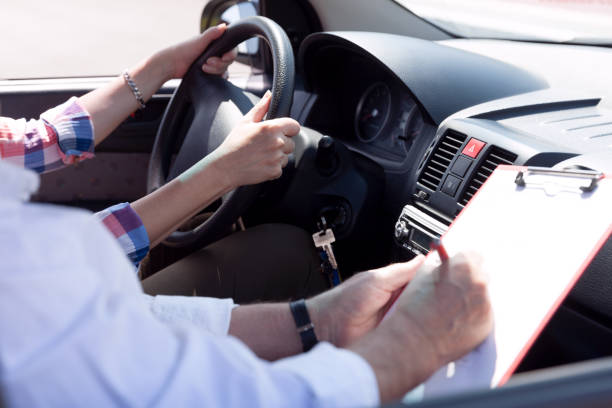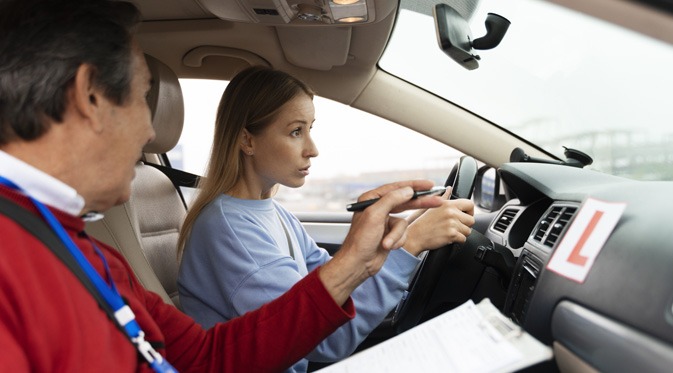Introduction
Driving is a rite of passage for many teenagers, marking the transition from adolescence to young adulthood. As the legal driving age varies from place to place, the decision of whether to obtain a driver’s license at 16 or wait until 18 is a significant one. This article delves into the pros and cons of both options, helping young individuals and their families make an informed choice.
Table of Contents
- Understanding the Legal Age Requirements
- Advantages of Getting a License at 16
- Increased Independence
- Earlier Learning and Adaptation
- Building Confidence
- Drawbacks of Getting a License at 16
- Lack of Experience
- Increased Risk
- Advantages of Waiting Until 18
- Maturity and Responsibility
- Better Decision-Making Abilities
- Reduced Insurance Costs
- Drawbacks of Waiting Until 18
- Delayed Independence
- Missed Learning Opportunities
- Considering Safety Aspects
- Teenage Brain Development
- Parental Guidance and Restrictions
- The Role of Peer Pressure
- Influence on Decision-Making
- Impact on Safe Driving Habits
- Parental and Guardian Perspectives
- Trust and Communication
- Assessing Individual Readiness
- The Importance of Driver’s Education
- Formal Training Programs
- Simulators and Realistic Scenarios
- Legal and Practical Considerations
- Graduated Driver’s Licensing (GDL) Programs
- State Laws and Regulations
- Personal Finance and Vehicle Ownership
- Costs of Owning and Maintaining a Car
- Financial Preparedness
- Environmental and Social Factors
- Carbon Footprint and Alternative Transportation
- Impact on Social Interactions
- Public Transportation and Urban Planning
- Accessibility and Convenience
- Navigating Public Transit
- The Influence of Technology
- Ride-Sharing Services
- Autonomous Vehicles
- Conclusion
Advantages of Getting a License at 16
Increased Independence
At 16, obtaining a driver’s license can provide a newfound sense of independence. Teenagers can drive themselves to school, part-time jobs, and social events, reducing the reliance on parents or guardians for transportation.
Earlier Learning and Adaptation
Starting driving lessons or driver license online course early allows for gradual learning and adaptation to the road environment. Teenagers can absorb the rules and etiquettes of driving at a time when their cognitive abilities are still highly flexible.
Building Confidence
Gaining driving experience at 16 can lead to increased self-confidence. Mastering the skills required for safe driving at a young age can instill a sense of accomplishment and empowerment.
Drawbacks of Getting a License at 16
Lack of Experience
One of the major downsides of getting a license at 16 is the lack of experience but Drivers ed for 18 is the best time for your License. Teenagers might not have encountered various challenging driving scenarios, which could hinder their ability to react effectively in emergencies.
Increased Risk
Statistics show that teenage drivers are more prone to accidents. Inexperience, coupled with a tendency to engage in risky behaviors, can result in higher accident rates among 16-year-old drivers.
Advantages of Waiting Until 18
Maturity and Responsibility
Waiting until 18 allows for further emotional and cognitive development. At this age, individuals often exhibit better decision-making abilities and are more likely to adhere to road safety regulations.
Better Decision-Making Abilities
With a couple of extra years of maturity, 18-year-olds can better assess risks and make informed decisions on the road. This can contribute to safer driving practices and reduced accident rates.
Reduced Insurance Costs
Insurance companies generally offer lower premiums to individuals who start driving at 18. This is due to the perceived reduced risk associated with more mature drivers.
Drawbacks of Waiting Until 18
Delayed Independence
Waiting until 18 might delay the sense of independence that comes with driving. Teenagers could miss out on valuable opportunities to learn responsibility through managing their own transportation.
Missed Learning Opportunities
By not starting driving lessons at 16, teenagers might miss the window for optimal learning. The flexibility of the teenage brain gradually declines after adolescence, potentially affecting their ability to acquire new skills.
Considering Safety Aspects
Teenage Brain Development
The teenage brain is still developing, particularly the areas responsible for decision-making and risk assessment. Starting driving at 16 could allow for the gradual refinement of these crucial faculties.
Parental Guidance and Restrictions
Parents and guardians can play a pivotal role in ensuring safe driving practices. Teenagers who start driving at 16 might benefit from a period of supervised driving, allowing parents to impart essential skills and values.
The Role of Peer Pressure
Influence on Decision-Making
Peer pressure can significantly impact a teenager’s decision on when to get a driver’s license. Friends’ choices and opinions might sway an individual’s perspective on the right time to start driving.
Impact on Safe Driving Habits
Starting driving at 16 might expose teenagers to the negative aspects of peer pressure. They could be more susceptible to distractions and risky behaviors when driving with friends in the car.
Parental and Guardian Perspectives
Trust and Communication
Parents often struggle with the balance between trusting their teenager’s abilities and ensuring their safety. Open communication about the decision to start driving can foster understanding and cooperation.
Assessing Individual Readiness
Guardians are in a prime position to assess their teenager’s readiness for driving. Factors such as maturity, responsibility, and adherence to rules should guide the decision-making process.
The Importance of Driver’s Education
Formal Training Programs
Enrolling in a comprehensive driver’s education program can provide teenagers with the knowledge and skills needed for safe driving. Starting at 16 allows more time to go through these programs.
Simulators and Realistic Scenarios
Advanced driving simulators can expose teenagers to various road conditions and hazards. Starting early enables them to learn from virtual experiences before facing them on real roads.
Legal and Practical Considerations
Graduated Driver’s Licensing (GDL) Programs
Many places have GDL programs, which gradually introduce teenagers to driving under different conditions. Starting at 16 allows for a smoother progression through these phases.
State Laws and Regulations
Understanding the legal framework for teenage drivers is crucial. Starting driving at 16 ensures that teenagers are well-versed in local traffic laws and regulations.
Personal Finance and Vehicle Ownership
Costs of Owning and Maintaining a Car
Owning a car comes with expenses beyond the initial purchase. Teenagers should be financially prepared to handle costs like fuel, maintenance, insurance, and registration.
Financial Preparedness
Starting driving at 16 gives teenagers more time to save up for these expenses. They can also learn valuable budgeting skills and understand the financial responsibilities of vehicle ownership.
Environmental and Social Factors
Carbon Footprint and Alternative Transportation
Starting driving at 16 might lead to increased carbon emissions. Teenagers could consider alternative transportation options, like public transit or cycling, to reduce their environmental impact.
Impact on Social Interactions
Having a driver’s license can enhance social interactions, as teenagers gain the ability to participate in a wider range of activities. Starting early could contribute to a more socially active lifestyle.
Public Transportation and Urban Planning
Accessibility and Convenience
Urban areas often offer efficient public transportation networks. Waiting until 18 might be a viable option for teenagers who can rely on these systems to get around.
Navigating Public Transit
Teenagers who wait until 18 might have the chance to develop better public transit navigation skills. This can be especially useful for future travels or when living in places with robust transportation networks.
The Influence of Technology
Ride-Sharing Services
Technological advancements have introduced ride-sharing services that provide an alternative to personal vehicle ownership. Teenagers who wait until 18 might have access to these convenient options.
Autonomous Vehicles
The rise of autonomous vehicles could reshape the driving landscape. Teenagers who wait until 18 might experience a world where self-driving cars are more prevalent and accessible.
Conclusion
Deciding whether to get a driver’s license at 16 or wait until 18 is a complex choice with various factors to consider. It’s essential to weigh the advantages and drawbacks of both options, taking into account personal maturity, readiness, financial preparedness, and the influence of technology. Ultimately, the decision should prioritize safety and responsible driving practices.
FAQs
- Is it safer to start driving at 18? Starting driving at 18 might be safer due to increased maturity and better decision-making abilities.
- Can waiting until 18 save on insurance costs? Yes, insurance costs are often lower for individuals who start driving at 18 due to reduced perceived risk.
- Are there benefits to getting a license at 16? Yes, getting a license at 16 offers increased independence and the opportunity for earlier learning.
- What about the environmental impact of driving? Starting driving at 16 might contribute to higher carbon emissions, but alternatives like public transit can mitigate this impact.
- How can parents help with the decision? Parents can assess their teenager’s maturity, communicate openly, and consider enrolling them in comprehensive driver’s education programs.










